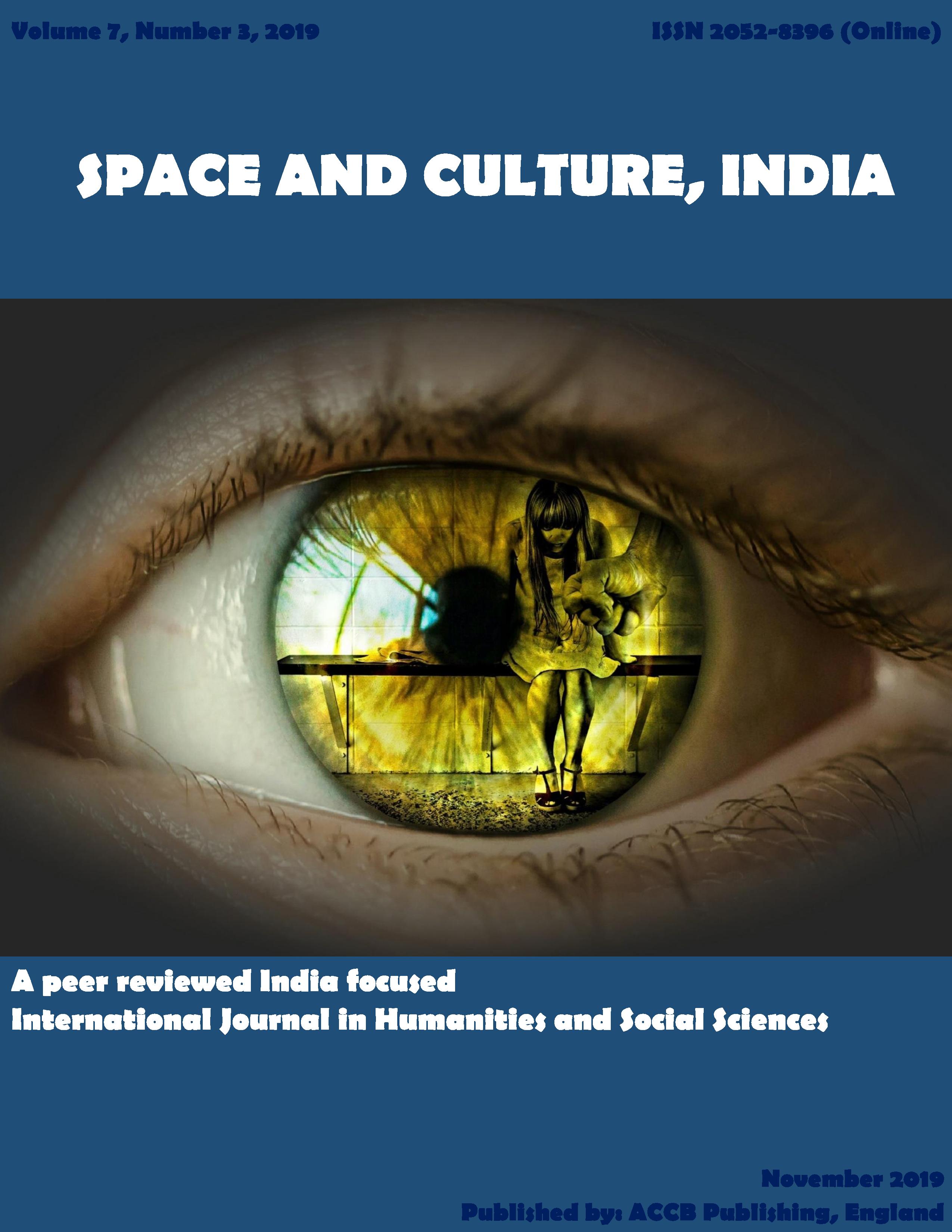The Role of Language in Intercultural Communication

Abstract
Intercultural dialogue as a critical component of modern society should contribute to the self-identification of a person in the cultural space. This research aims to demonstrate the importance of multiculturalism— learning a second language in the Russian system of higher education. To accomplish the research objectives, 78 students were recruited at Tula State University, 158 students at Kuban State University and 152 technical students at Moscow Aviation Institute. Analysing and comparing experiments on learning a second language, the findings determine the effective methods and forms of teaching. In doing so, the research foregrounds some forms of effective teaching and indicates the ways to achieve them. In other words, the findings made it possible to identify the effective strategies for teaching a foreign language both in local and global level.
Keywords
intercultural communication, intercultural competence, multiculturalism, multicultural dialogue, intercultural education, socio-cultural education
References
- Abisheva, K., Nagimzhanova, K., Aykenova, R., Kapanova, A., Koldasbayeve, Z., & Kanapyanova, A. (2019). Cross-cultural competence of communicators as a way to create a positive eco-informational environment. Space and Culture, India, 7(2), 76-88. https://doi.org/10.20896/saci.v7i2.460 DOI: https://doi.org/10.20896/saci.v7i2.460
- Al Jarrah, H. Y. (2019). Six thinking hats: An analysis of the skill level of Jordanian vocational education teachers and the extent of skill application. Space and Culture, India, 7(1), 170-185. https://doi.org/10.20896/saci.v7i1.470 DOI: https://doi.org/10.20896/saci.v7i1.470
- Babaii, E. (2018). Multiculturalism: An asset or a problem? Implications for Intercultural Education. Intercultural Communication Education, 1(2), 45-53. DOI: https://doi.org/10.29140/ice.v1n2.65
- Balitskaya, I.V. (2008). Multicultural education in the USA, Canada, and Australia. Thesis. Moscow.
- Banks, J. A. (2015). Cultural diversity and education: Foundations, curriculum, and teaching. Routledge: London DOI: https://doi.org/10.4324/9781315622255
- Beacco, J. C., & Byram, M. (2003). Guide for the development of language education policies in Europe: From linguistic diversity to plurilingual education. Council of Europe: France
- Bleszynska, K. M. (2010). Intercultural education in post communist countries. Intercultural and multicultural education. Enhancing global interconnectedness, 69-83.
- Charles, M., & Pecorari, D. (2015). Introducing English for academic purposes. Routledge: London DOI: https://doi.org/10.4324/9781315682129
- Crosbie, V. (2014). Capabilities for intercultural dialogue. Language and Intercultural Communication, 14(1), 91-107. DOI: https://doi.org/10.1080/14708477.2013.866126
- Gass, S., Van Gorp, K., & Winke, P. (2019). Using different carrots: How incentivization affects proficiency testing outcomes. Foreign Language Annals, 52(2), 216-236, https://doi.org/10.1111/flan.12389 DOI: https://doi.org/10.1111/flan.12389
- Hassan, X., & Starkey, H. (2000). Civilisation.
- Kang, T., Arvizu, M. N. G., Chaipuapae, P., & Lesnov, R. O. (2019). Reviews of academic english listening tests for non-native speakers. International Journal of Listening, 33(1), 1-38, https://doi.org/10.1080/10904018.2016.1185210 DOI: https://doi.org/10.1080/10904018.2016.1185210
- Kukulska-Hulme, A. (2009). Will mobile learning change language learning?. ReCALL, 21(2), 157-165, DOI: https://doi.org/10.1017/S0958344009000202 DOI: https://doi.org/10.1017/S0958344009000202
- Nikolaeva, Y. V., Grimalskaya, S. A., Petrosyants, D. V., Zulfugarzade, T. E., Maystrovich, E. V., & Shestak, V. A. (2018). Philosophical view of multiculturalism in modern European cinematography. European Journal of Science and Theology, 14(6), 205-214.
- Oliver, P. (2017). The concepts of globalisation and culture. In Globalisation, education and culture shock (pp. 10-20). Routledge: London DOI: https://doi.org/10.4324/9781315254159-2
- Pais, A., Costa, M. (2017). An ideology critique of global citizenship education. Critical Studies in Education, 3, 1-16. DOI: https://doi.org/10.1080/17508487.2017.1318772
- Parekh, B. (2001). Rethinking multiculturalism: Cultural diversity and political theory. Ethnicities, 1(1), 109-115. DOI: https://doi.org/10.1177/146879680100100112
- Parekh, B. (2003). Cosmopolitanism and global citizenship. Review of International Studies, 29(1), 3-17. DOI: https://doi.org/10.1017/S0260210503000019
- Peng, M. Y. P. (2019). Testing the mediating role of student learning outcomes in the relationship among students’ social capital, international mindsets, and employability. The Asia-Pacific Education Researcher, 28(3), 229-237. DOI: https://doi.org/10.1007/s40299-018-00431-3
- Pieterse, J. N. (2019). Globalization and culture: Global mélange. Rowman & Littlefield Publishers: New York
- Piller, I. (2017). Intercultural communication: A critical introduction. Edinburgh University Press:Edinburgh
- Sarmento, C. (2014). Interculturalism, multiculturalism, and intercultural studies: Questioning definitions and repositioning strategies. DOI: https://doi.org/10.1515/ip-2014-0026
- Smith, M., & Stansfield, C. W. (2017). Testing Aptitude for Second Language Learning. Language Testing and Assessment, 1-14. DOI: https://doi.org/10.1007/978-3-319-02261-1_5
- Spencer-Rodgers, J., & McGovern, T. (2002). Attitudes toward the culturally different: The role of intercultural communication barriers, affective responses, consensual stereotypes, and perceived threat. International Journal of Intercultural Relations, 26(6), 609-631. DOI: https://doi.org/10.1016/S0147-1767(02)00038-X
- Spring, J. (2017). The intersection of cultures: Multicultural education in the United States and the global economy. Routledge: London DOI: https://doi.org/10.4324/9781351226301
- Starkey, H. (2007). Language education, identities and citizenship: Developing cosmopolitan perspectives. Language and Intercultural Communication, 7(1), 56-71. DOI: https://doi.org/10.2167/laic197.0
- Ter-Minasova, S. G. (2000). Language and intercultural communication. Moscow: Slovo, 634.
- Ying, W. (2016). Review of the Confucius Institutes’ strategy for the dissemination of Chinese culture. Chinese Education & Society, 49(6), 391-401. DOI: https://doi.org/10.1080/10611932.2016.1252217
- Zhukova, T., Bogoslovskiy, V., Dobudko, T., Sevenyuk, S., & Vershinina, L. (2019). Multicultural Teaching in Regions (Within Sustainability Conception in Education). Space and Culture, India, 7(1), 274-284. https://doi.org/10.20896/saci.v7i1.437 DOI: https://doi.org/10.20896/saci.v7i1.437